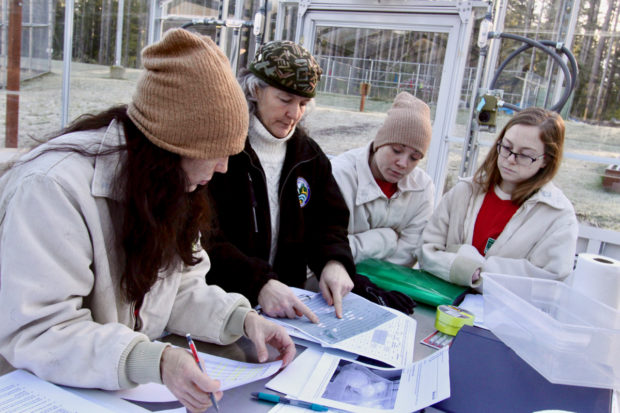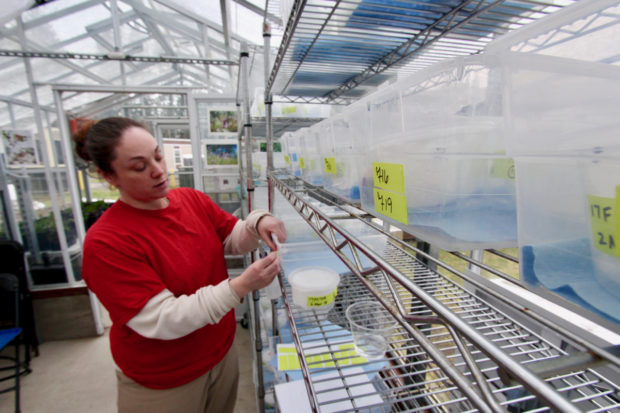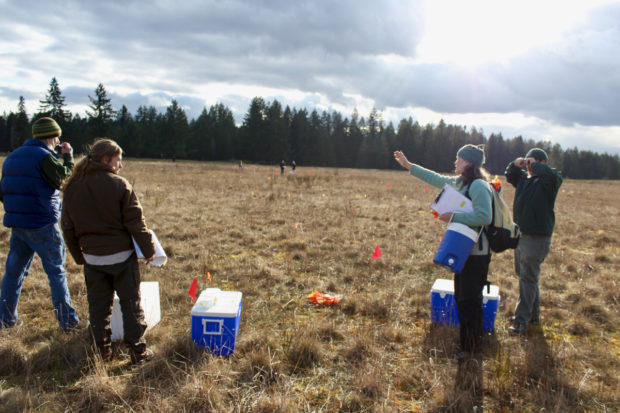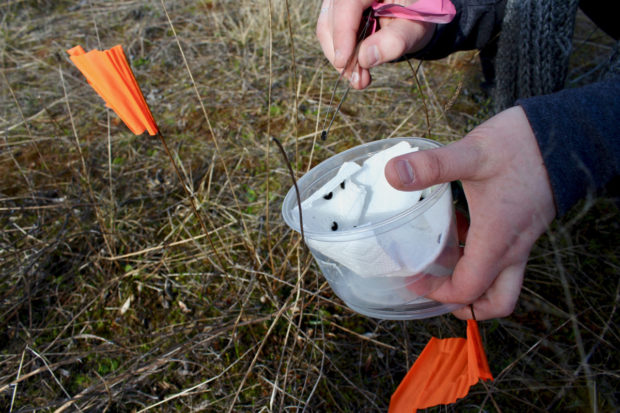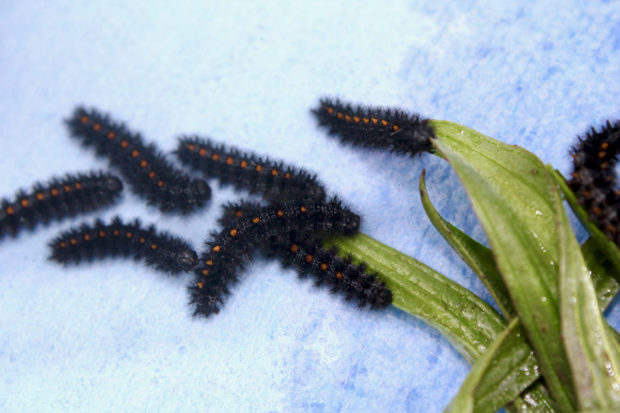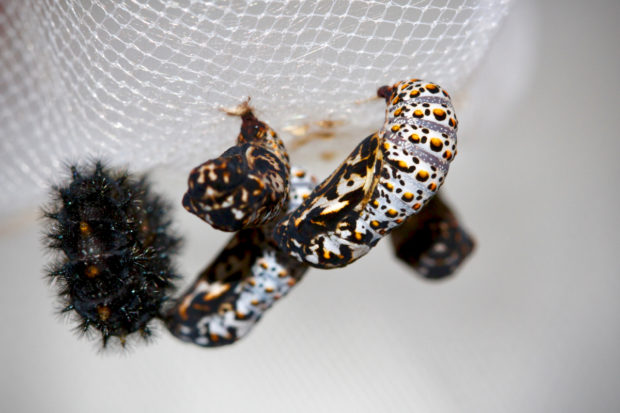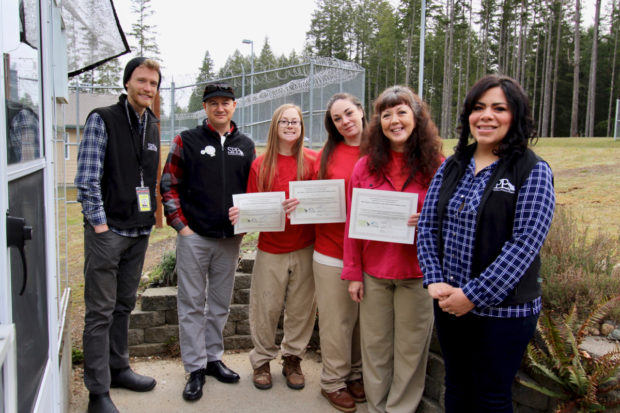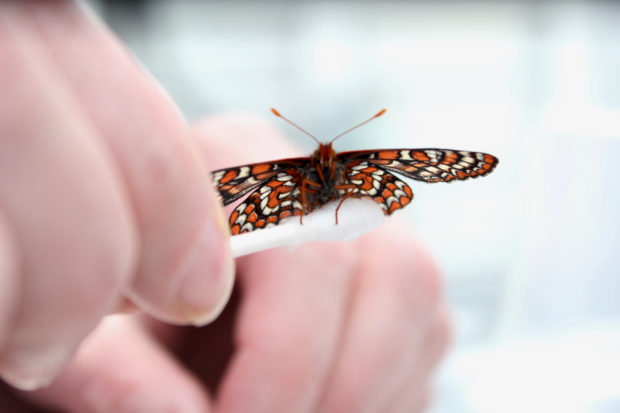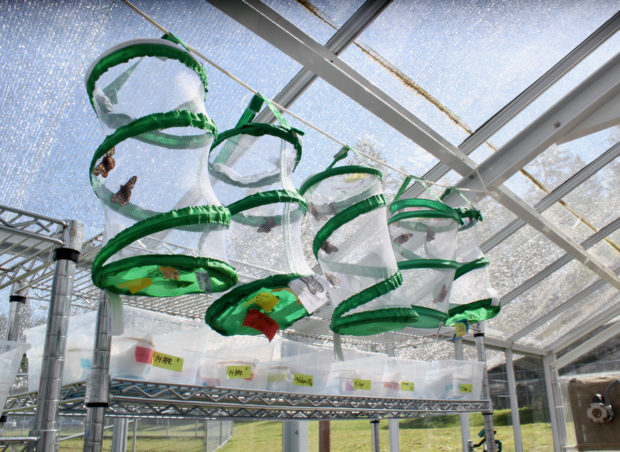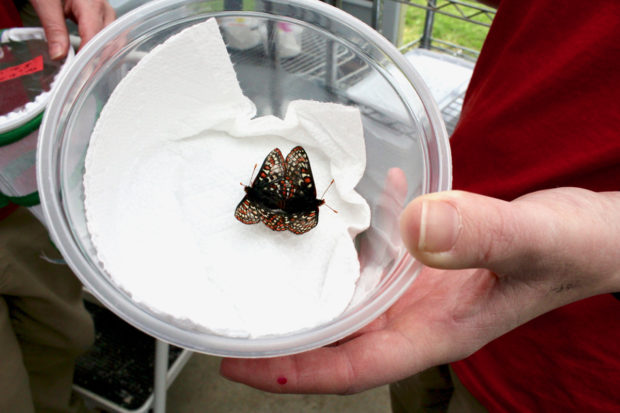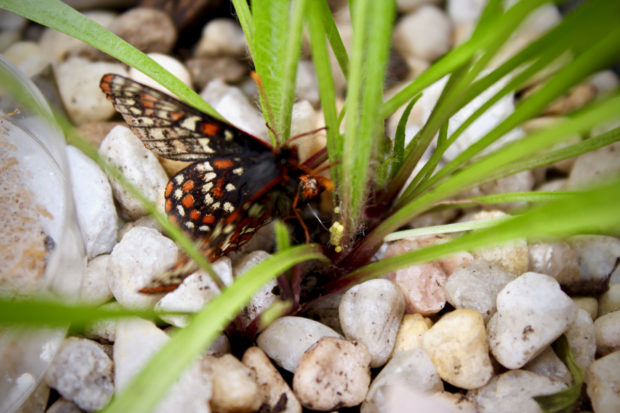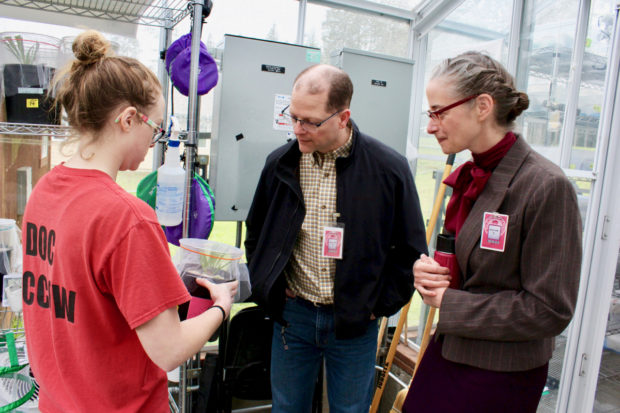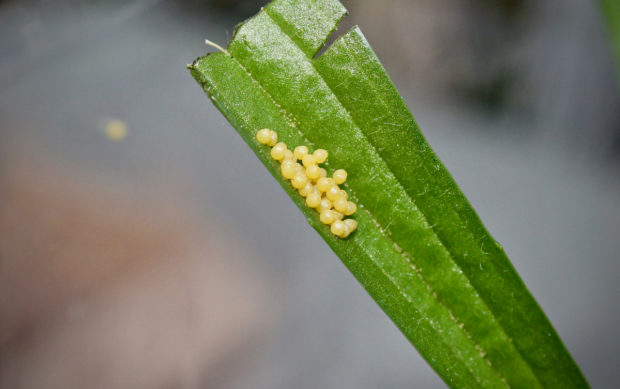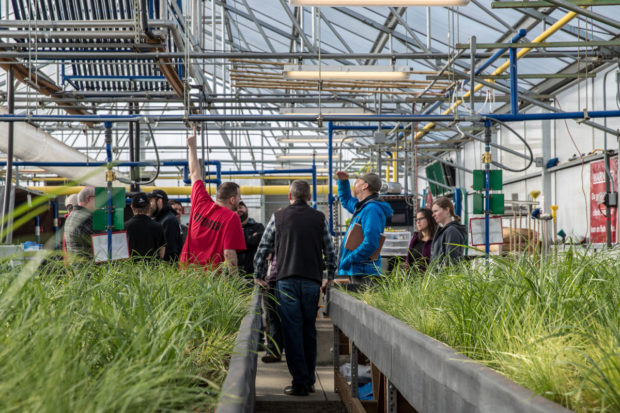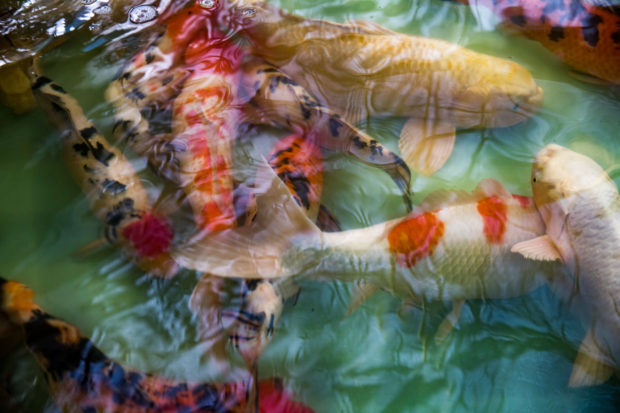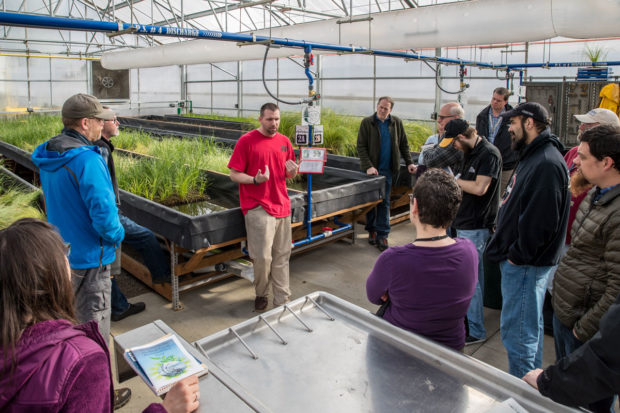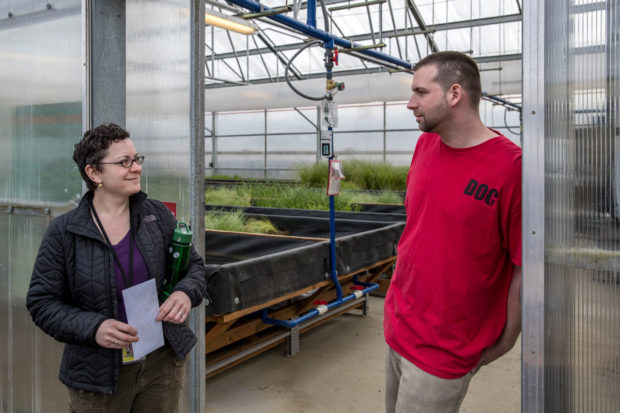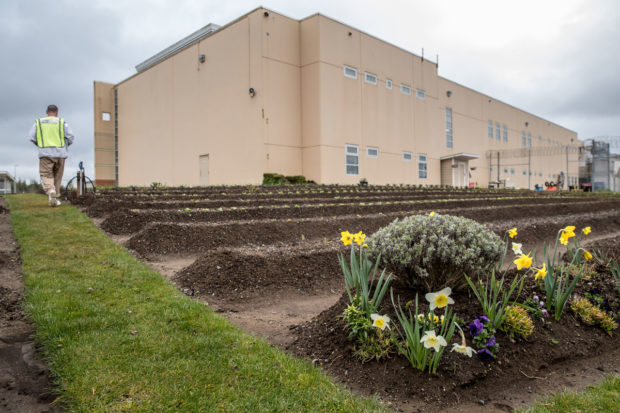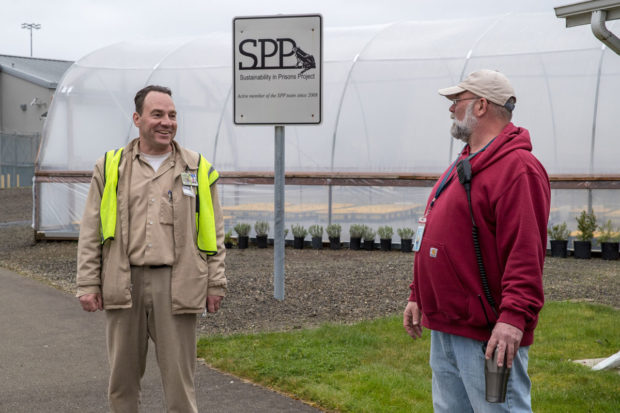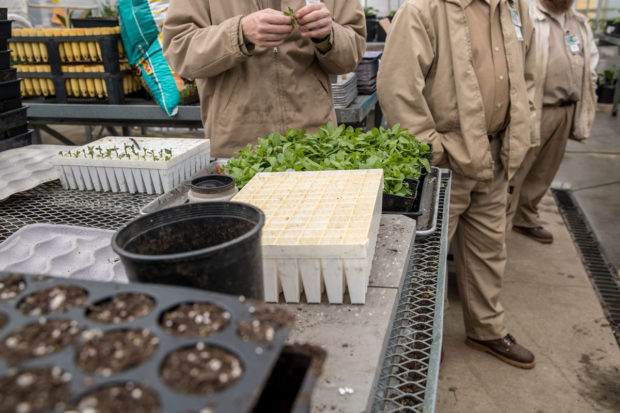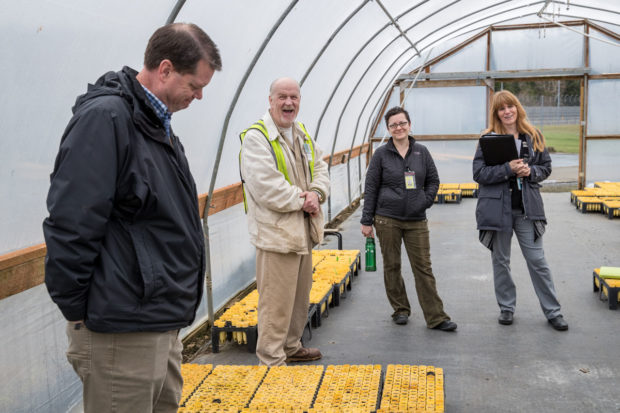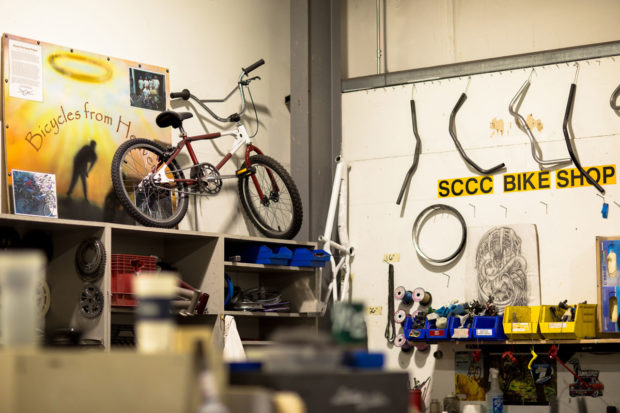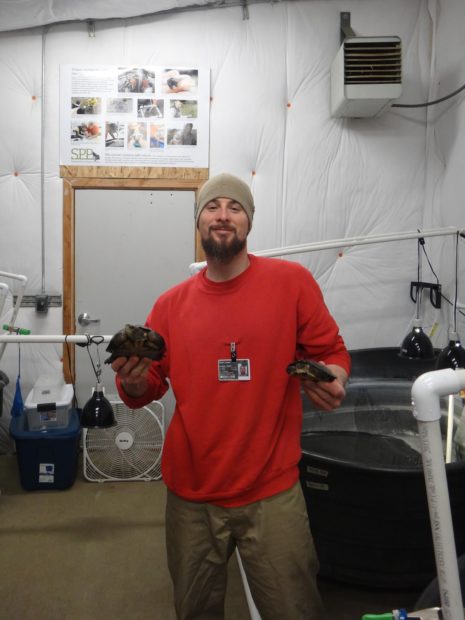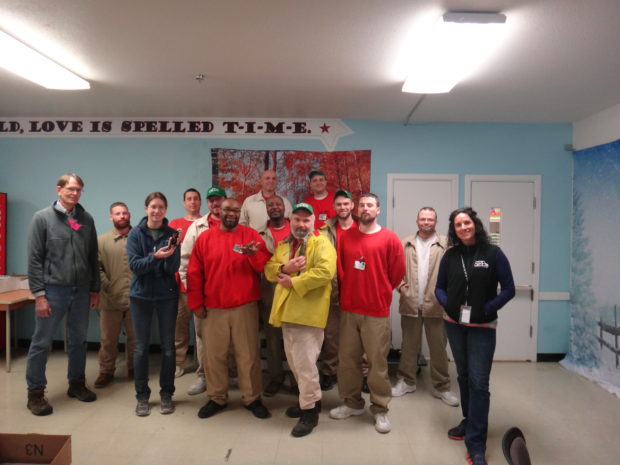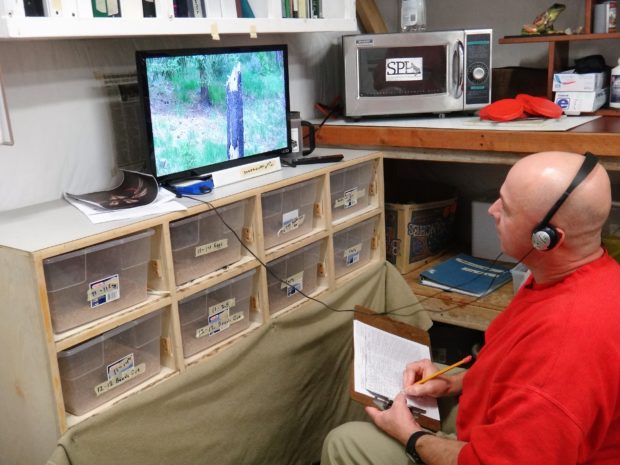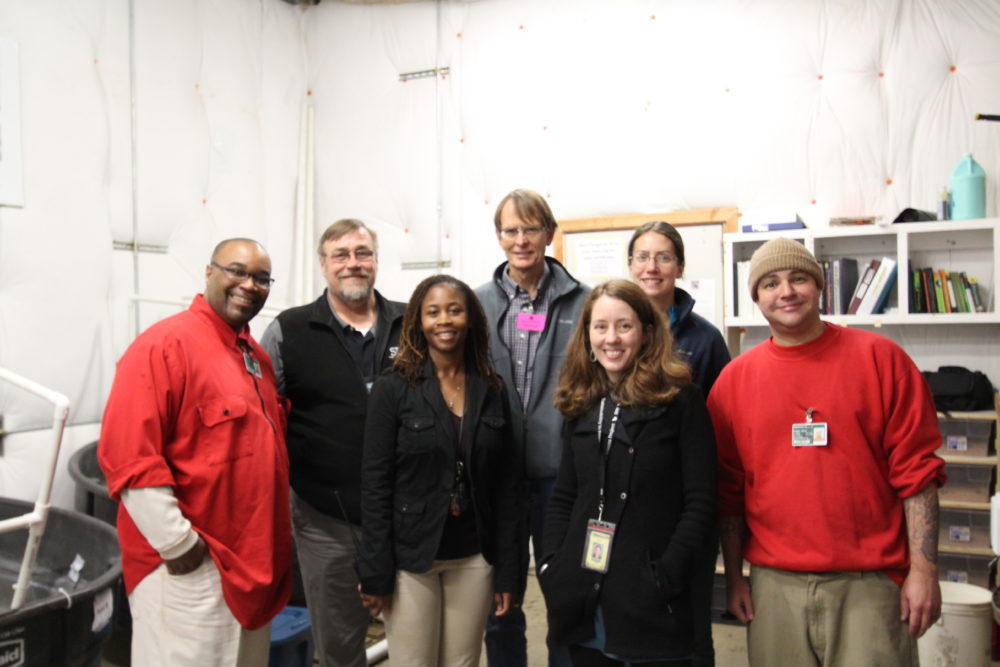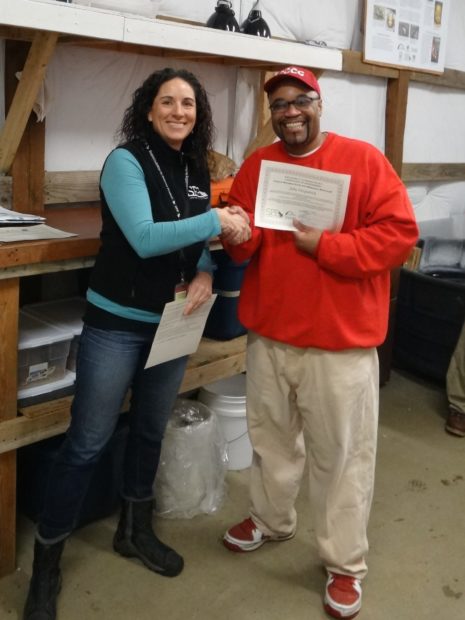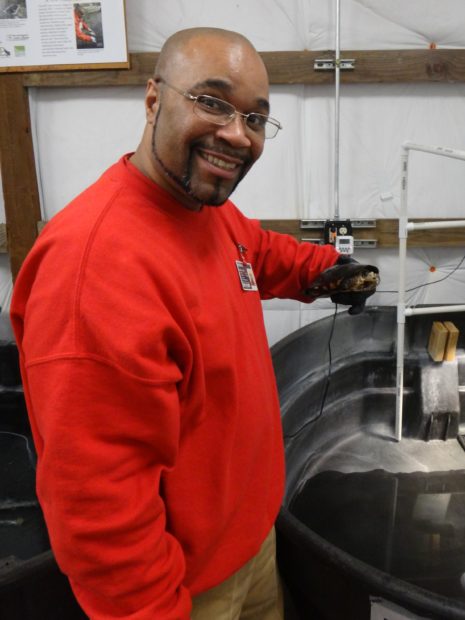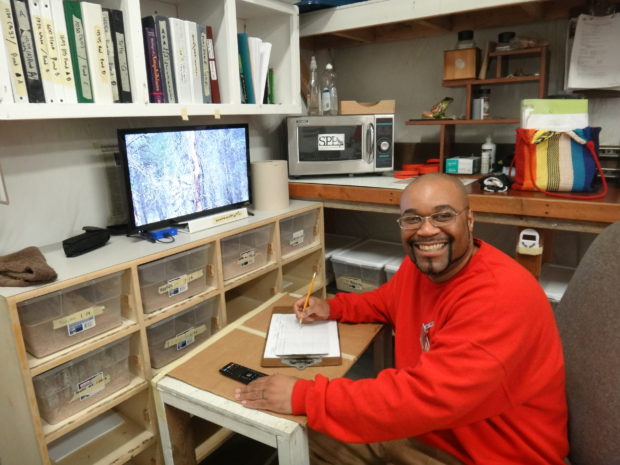Text by Amanda Mintz and Danyl Herringshaw. Photos by Amanda Mintz unless otherwise noted.
The goal of an aquaponics system is to mimic nature by recycling nutrients from animal waste into plant tissue through microbial decomposition. The needs of fish, plants, and microbes must be balanced to keep the system functioning properly. The technicians at Stafford Creek Corrections Center are tasked with being sensitive to the needs of the system and work hard to maintain the balance among these symbiotic organisms. The technicians learn about plant and microbial ecology, water quality, and fish biology while also learning how to troubleshoot plumbing, heating systems, and pumps. When the system is working as it should, the technicians may be left with little maintenance to do. But when something goes wrong, such as a spike in ammonia or a failed pump, it is their job to figure out how to find the problem and fix it.
Click to learn more about how SPP is partnering with the United States Fish and Wildlife Service, the Center for Natural Lands Management, and the Department of Defense to restore Oregon spotted frog habitat in Washington State.
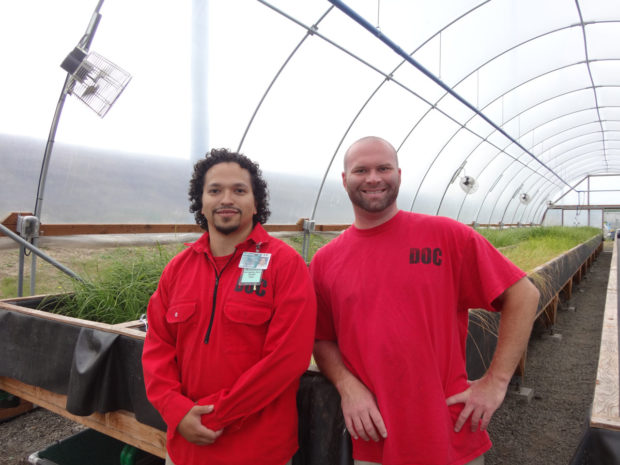
Danyl Herringshaw (left) and Joseph Oddo, current EVM technicians, are learning to maintain a system that often behaves in unexpected ways. This photo was taken just prior to loading mats for delivery…
This spring Danyl Herringshaw, an EVM technician since January, reflected on his experiences in the aquaponics facility:
“I think the most important thing I’ve learned since working at the EVM greenhouse at SCCC is the value of a mistake. The EVM greenhouse is a very delicate and fickle system. A small adjustment to the water flow can affect the entire system’s timing, for example. There have been countless examples of how I’ve learned and grown in my knowledge of this system from mine and others’ mistakes.
“This also puts into perspective how delicate a natural system is. Minor adjustments and maintenance seem to make this job slow, even boring sometimes. However, if an adjustment is too large or too small or a certain piece is overlooked during maintenance, it can have large ramifications. These adjustments and maintenance seem to happen effortlessly in nature.
“This is why natural habitats and ecosystems ought to be preserved when considering urban development. These systems are in place to keep us, and the wildlife that reside there, safe.”
In the EVM, we are doing our part to enhance natural ecosystems by growing native wetland plants in support of wetland habitat restoration for the threatened Oregon spotted frog. The plants are sown in soil and installed in mats once their roots and shoots are large enough. Then they continue growing in the mats until they achieve at least 50% cover. Mr. Herringshaw and Joseph Oddo, who has been working on the EVM project since March, have done an exceptional job sowing, tracking growth, and maintaining the health of the plants. We delivered another set of mats to Joint Base Lewis McChord in June.
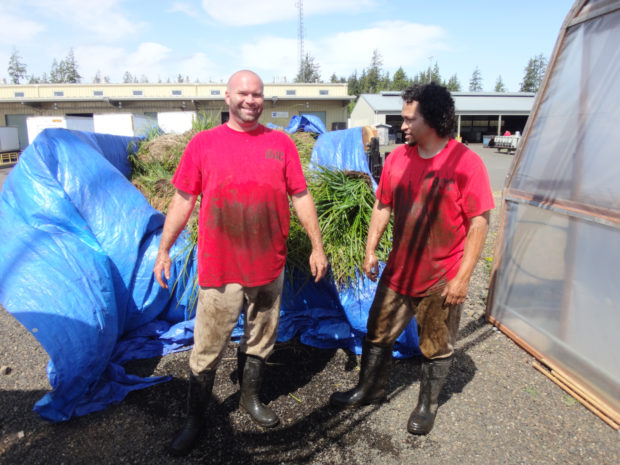
…and this photo was taken after loading the mats! Each mat can weigh up to 100 pounds, even after they are allowed to drain and dry out for 24 hours.
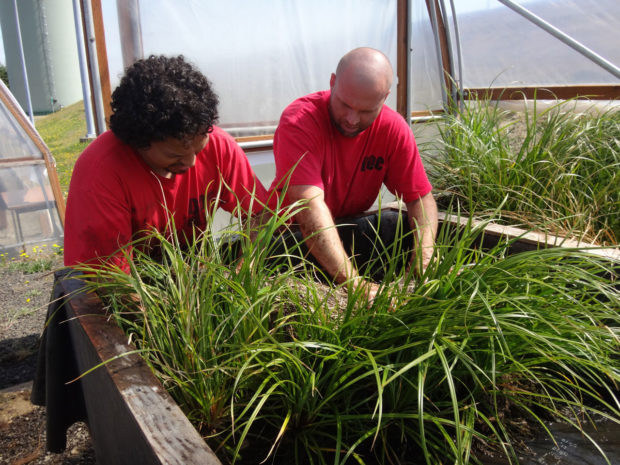
Mr. Herringshaw and Mr. Oddo roll up the mats before loading them onto the truck. In the field, they will be rolled out and secured in place; the plants perk right back up.
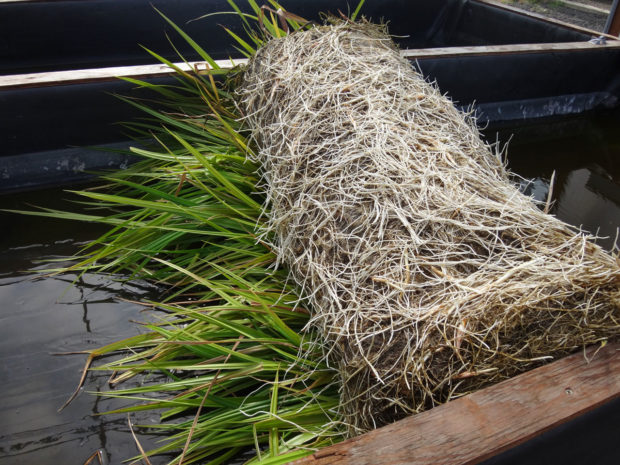
This mat can’t wait for contact with soil! Imagine reed canarygrass trying to grow through these lush roots.
The EVM project is a learning laboratory for technicians and staff alike. Amanda Mintz, EVM Coordinator and Master of Environmental Studies graduate student at Evergreen, has been researching the effects of adding compost tea to the aquaponics water on plant nutrient content . Theoretically, the microbial community in the compost tea—a brew made by soaking bags of compost in aerated water—aids in plant nutrient uptake in several ways, such as helping decompose organic matter in the water, or stimulating plant hormones that promote growth and increase nutrient uptake. Mr. Herringshaw and former technician Matthew Fuller collected plant tissue samples for Amanda to take back to Evergreen’s laboratories for analysis, tracked plant growth and health data, and ensured that system parameters remained constant during the experiment.
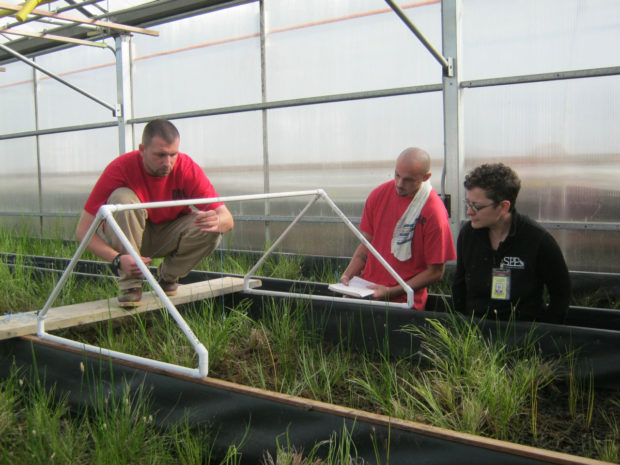
Former EVM technicians Brian Bedilion and Matt Fuller calculate percent cover using the point method. Photo by Jim Snider, DOC
Stay tuned for the results of Amanda’s project!
























